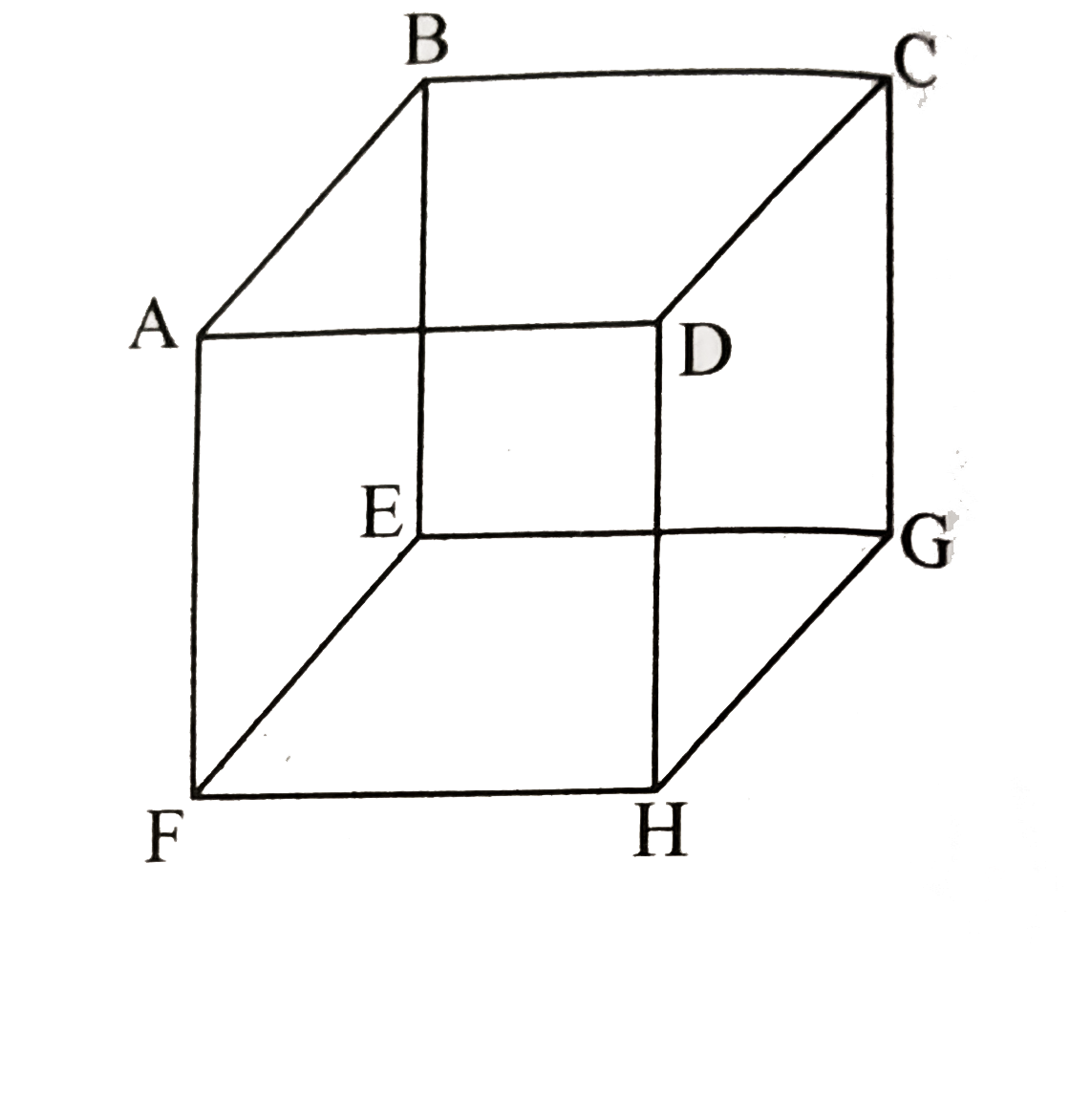In bcc structure of lattice constant a, the minimum distance between atoms is
√32a
√2a
a√2
a2
The correct Answer is:A
To find the minimum distance between atoms in a Body-Centered Cubic (BCC) structure with a lattice constant a, we can follow these steps:
Step 1: Understand the BCC Structure
In a BCC structure, there are atoms located at each of the eight corners of a cube and one atom at the center of the cube. The lattice constant a represents the edge length of the cube.
Step 2: Identify the Atoms and Their Arrangement
The atoms at the corners are positioned at coordinates such as (0,0,0), (0,0,a), (0,a,0), (a,0,0), etc. The atom in the center is located at (a/2, a/2, a/2).
Step 3: Calculate the Distance Between Atoms
To find the minimum distance between atoms, we need to consider the distance between the corner atoms and the center atom. The distance between two corner atoms can be calculated using the diagonal of the cube.
Step 4: Use the Diagonal Distance Formula
The distance d between two corner atoms that are diagonally opposite in the cube can be calculated using the formula:
d=√(a)2+(a)2+(a)2=√3a2=a√3
Step 5: Relate the Distance to Atomic Radius
In a BCC structure, the distance between the center atom and a corner atom is equal to 4r, where r is the atomic radius. Thus, we can set up the equation:
4r=a√3
Step 6: Solve for the Atomic Radius
From the equation above, we can solve for r:
r=a√34
Step 7: Find the Minimum Distance Between Atoms
The minimum distance between two atoms (which is the distance between two touching atoms) is given by:
Minimum Distance=2r
Substituting the value of r:
Minimum Distance=2×a√34=a√32
Conclusion
Thus, the minimum distance between atoms in a BCC structure with lattice constant a is:
Minimum Distance=a√32
In a BCC structure, there are atoms located at each of the eight corners of a cube and one atom at the center of the cube. The lattice constant a represents the edge length of the cube.
The atoms at the corners are positioned at coordinates such as (0,0,0), (0,0,a), (0,a,0), (a,0,0), etc. The atom in the center is located at (a/2, a/2, a/2).
To find the minimum distance between atoms, we need to consider the distance between the corner atoms and the center atom. The distance between two corner atoms can be calculated using the diagonal of the cube.
The distance d between two corner atoms that are diagonally opposite in the cube can be calculated using the formula:
d=√(a)2+(a)2+(a)2=√3a2=a√3
In a BCC structure, the distance between the center atom and a corner atom is equal to 4r, where r is the atomic radius. Thus, we can set up the equation:
4r=a√3
From the equation above, we can solve for r:
r=a√34
The minimum distance between two atoms (which is the distance between two touching atoms) is given by:
Minimum Distance=2r
Substituting the value of r:
Minimum Distance=2×a√34=a√32
Thus, the minimum distance between atoms in a BCC structure with lattice constant a is:
Minimum Distance=a√32
Similar Questions
Knowledge Check
A solid has a b.c.c. structure . If the distance of closest approach between the two atoms is 1.73Å. The edge length of the cell is :
A199 pmB√3/2 pmC142.2 pmD√2 pm
The potential energy between two atoms in a molecule is given by U(x)=ax12−bx6, where a and b are positive constants and x is the distance between the atoms. The atom is in stable equilibrium when
View SolutionThe potential energy between two atoms in a molecule is given by
U=ax2−bx2
where a and b are positive constants and x is the distance between the atoms. The atom is in stable equilibrium when x is equal to :−
View SolutionA crystal has bcc structure and its lattice constant is 3.6A. What is the atomic radius?
View SolutionSolid A+B− has a bcc structure .If the distance of closest apporach between two atoms is 173 pm ,the edge length of the cell is:
View SolutionIn the cubic lattice given below, the three distances between the atoms A−B,A−C, and A−G are, respectively,

View SolutionA salt MX has NaCl type lattice in which r is the minimum distance between Mz+ and Xz−. Each Mz+ ion is surrounded by
View SolutionAn element has a face-centred cubic (fcc) structure with a cell edge of a. The distance between the centres of two nearest tetrahedral voids in the lattice is:
View Solution
